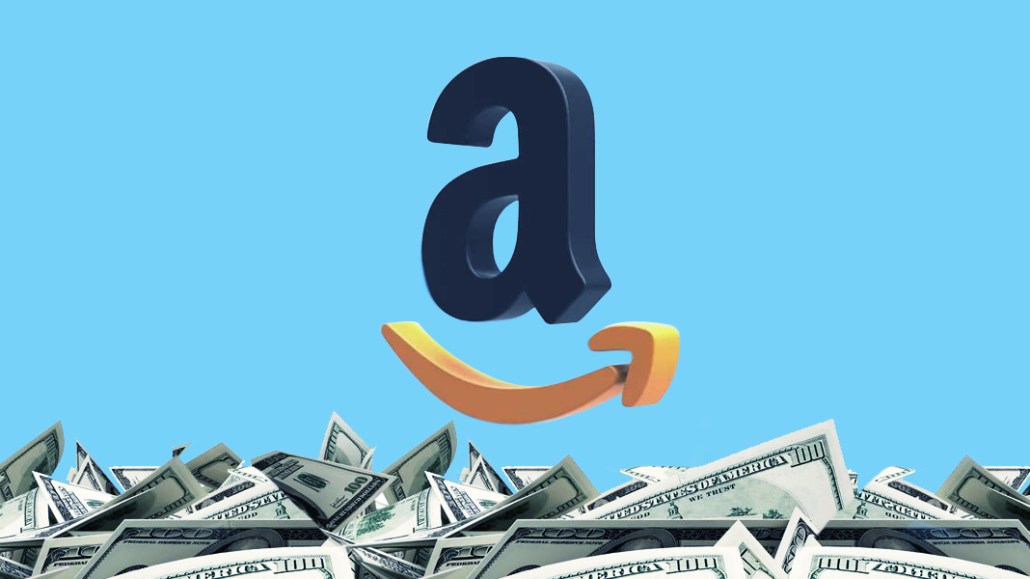Prime Day is more than just discounts as Amazon shows off its advertising cred

Amazon isn’t just using Prime Day to promote shopping in July but to wring more ad dollars out of skeptical marketers.
For all the hype around Amazon’s ads, many advertisers are still on the fence about the commerce giant, and Prime Day is a chance to show them how well its ads work. To that end, Amazon is sharing details with media buyers like the fact that Prime Day generated around $1 billion in revenue for the retailer, per JP Morgan Chase, and Prime Day was Amazon’s biggest sales day in the U.K., with impressions that day increasing by around 130 percent year-over-year.
It’s too early to know if brands will buy more ads during this year’s Prime Day — budgets tend to be adjusted on the fly due to increased competition during the short window — but advertisers are using Amazon’s ad products more than last year to influence shoppers at every stage of purchase, according to the five media buyers interviewed for this article. Still, there’s caution. Ad space on Amazon is more valuable for the short period where shoppers are literally rushing to the site, so agencies are seeing ads fluctuate in price on an hourly basis.
With this year’s event expanding to 36 hours over July 16 and 17, advertisers planned to spend more this year on paid search to capitalize on the jump in volume and competition, said Joe Farley, paid search director at performance agency iProspect. Bids for Amazon’s paid search advertising increase on average threefold during Prime Day, though, just as they do over the five-day period between Thanksgiving and Cyber Monday, the media buyers said. Prime customers convert eight times more than non-Prime customers, so the higher ad prices may be worth it.
“Brands continue to see the value in taking part, even though it’s become quite a crowded space,” said Farley. “However, due to the level playing field of Amazon’s Marketing Platforms, competitors can easily inflate an auction, which leads to an increase in cost to maintain similar levels of visibility. This means that brands have to weigh up the benefits of profitability versus visibility.”
The dilemma extends to promotional offers from advertisers. Amazon is looking for advertisers to offer discounts. The price of short-term flash sales that are just for Amazon Prime members has jumped from $500 last Prime Day to $750 this year, per CNBC. One media buyer, speaking on condition of anonymity, said they aren’t advising clients to use flash deals because the sales event is oversaturated and too short to find enough shoppers, though.
Other agencies have given clients similar advice. Brands are spending less funding discounts during Prime Day and more on advertising, said Tod Harrick, vp of product at Wunderman’s commerce agency Marketplace Ignition. Companies that have not actively discounted offers think it’s better to spend more on paid search to grab the increased, high-purchase intent customers, said Harrick.
It’s well known that most product searches start on Amazon, but it’s now also clear that where people search for products is increasingly where they buy them. More than half (51 percent) of shoppers start their journey on Amazon — compared to 16 percent on Google — and 55 percent buy their goods on the retail site, according to e-commerce specialist Salmon’s survey of over 3,500 online shoppers across the U.K. and the U.S.
Amazon responded in March, making it easier for advertisers to see traffic to their stores from external sources and how much revenue it generates. Kenshoo, Possible and The Tombras Group have seen more brands paying closer attention to those metrics during Prime Day as they evaluate how to use Amazon’s ads. The early signs are that stores are useful as landing pads for offsite campaigns but are less important than search ads and promotional discounts to brands.
As effective as Prime Day may be for advertisers, they rely heavily on Amazon during the sales period. That has some worried that the more they work with Amazon, the more it could take their customers. Some clients have even asked their agencies to track the penetration of Amazon’s private-label goods over the sales window, while others are watching how sales of Whole Foods products perform during the company’s first Prime Day, said one executive on condition of anonymity.
For more retail coverage from Digiday, including exclusive analysis, research and interviews, subscribe to our weekly retail briefing email.
More in Marketing

The definitive Digiday guide to what’s in and out for advertising in 2026
Here’s the definitive guide to what’s in and out in 2026.

‘Less pitching, more listening’: What Amazon is really doing at CES
Amazon’s ad execs come to CES for their annual reality check.

After watching X’s ownership issues play out, marketers brace for TikTok whiplash in 2026
TikTok’s ownership drama has echoes of X (formerly Twitter), but ad performance has kept marketers for fleeing—for now.





